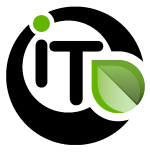http://rmlglobal.com/rmldirect.html
4. Brief description of use example (up to 150 words): Farmers’ decisions on which crops to plant, and where to sell their produce have significant impact on their profits. An Indian farmer uses a mobile phone service to increase his agricultural yields and profits. He receives four to five text messages daily about short and long term weather forecasts, market prices of different produce, and effective farmer practices. He can make decisions on which crops to grow. He can also sell his produce directly using the market information obtained, without using the services traditionally provided by middlemen who take crops to the market, thus increasing his income. He can also personalize his texts to receive information about particular crops and particular markets. He often shares information with fellow farmers in person or by forwarding texts using his mobile phone, which he carries all the time.
5. Economic area of this use example: Agriculture
7. Digital technology used: Mobile phone with voice call and SMS capability
8. Software applications (if applicable): Not applicable
9. Purpose(s) for digital technology use: A farmer with adequate digital literacy and access to the RML service can make better decisions at each crop cycle, including what to grow and where to sell his crops. He will have an advantage over other farmers.
10. Key actions/interactions/transactions in use example:
10a. Actions (without involving other parties): A farmer charges his mobile phone and turns it on. The farmer can carry his phone while working. A farmer uses RML service on his mobile phone to receive SMS information about weather, market prices and farming practices. The farmer receives four to five personalized SMS messages each day. The farmer can compare prices in different markets and decide on a market to sell his product on a particular day. The farmer can organize and delete the SMS messages on the phone.
10b. Interactions (with other parties): The farmer can call other farmers and show information to other farmers.
10c. Transactions (materials/money exchanged with others): Not applicable
11. Additional comments and use example implications: Agricultural competition is fierce in India as there are millions of farmers, and millions more people are expected to become farmers. Digital literacy and technology for each farmer can help boost national income, increase agricultural yields and entice more young people to become farmers. India has cheap voice and text plans and needs sufficient basic mobile phone infrastructure for all.
- Use Example Competences and Proficiency Levels
Digital literacy competences related to the use example have been identified below, and beside each identified competence is a brief description of adequate performance for the competence.
| Competence area | Competences | Adequate performance level |
|---|---|---|
| 0. Devices and software operations | 0.1 Physical operations of digital devices | A farmer can input a simcard, charge his mobile phone and turn it on. The farmer can carry his phone while working. |
| 0.2 Identifying software to operate digital devices | ||
| 1. Information and data literacy | 1.1 Browsing, searching and filtering data, information and digital content | The farmer can receive four to five personalized SMS messages each day about weather, market prices and farming practices. The farmer can navigate the mobile phone interface to find relevant messages. |
| 1.2 Evaluating data, information and digital content | The farmer can compare prices in different markets and decide on a market to sell his product on a particular day. | |
| 1.3 Managing data, information and digital content | The farmer can organize and delete the SMS messages on the phone. | |
| 2. Communication and collaboration | 2.1 Interacting through digital technologies | The farmer can call other farmers and show information to other farmers. |
| 2.2 Sharing through digital technologies | ||
| 2.3 Engaging in citizenship through digital technologies | ||
| 2.4 Collaborating through digital technologies | ||
| 2.5 Netiquette | ||
| 2.6 Managing digital identity | ||
| 3. Digital content creation | 3.1 Developing digital content | |
| 3.2 Integrating and re-elaborating digital content | ||
| 3.3 Copyright and licences | ||
| 3.4 Programming | ||
| 4. Safety | 4.1 Protecting devices | |
| 4.2 Protecting personal data and privacy | ||
| 4.3 Protecting health and well-being | ||
| 4.4 Protecting the environment | ||
| 5. Problem solving | 5.1 Solving technical problems | |
| 5.2 Identifying needs and technological responses | ||
| 5.3 Creatively using digital technologies | ||
| 5.4 Identifying digital competence gaps | ||
| 5.5 Computational thinking | ||
| 6. Career-related competences | 6.1 Operating specialized digital technologies for a particular field
6.2 Interpreting data, information and digital content for a particular field |

